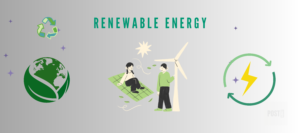As more people shift to remote work, the need for a comfortable and efficient home office has become essential. But beyond functionality, creating an eco-friendly home office is crucial for reducing environmental impact. Implementing sustainable practices not only benefits the planet but also enhances your well-being and productivity. In this guide, we’ll explore practical steps to transform your workspace into a green and healthy environment.
1. The Importance of an Eco-Friendly Home Office
An eco-friendly home office is more than just a trend—it’s a necessity for the future. Traditional home offices often contribute to energy waste and environmental degradation. By adopting sustainable alternatives, you can significantly reduce your carbon footprint.
Environmental Impact
Traditional office setups often depend on energy-intensive devices and materials that are not environmentally sustainable, contributing significantly to waste and carbon emissions. Computers, printers, and lighting systems with high energy consumption increase the ecological footprint of daily operations, while the use of disposable, non-recyclable office supplies exacerbates environmental degradation. Transitioning to an eco-friendly home office not only minimizes waste but also significantly reduces energy usage through the adoption of energy-efficient technologies, such as LED lighting and Energy Star-certified equipment. Furthermore, opting for sustainable materials—such as furniture made from reclaimed wood, recycled paper products, and biodegradable supplies—promotes resource conservation and reduces landfill contributions. Creating an environmentally conscious workspace fosters a healthier planet by aligning daily practices with sustainable values, ensuring that productivity and environmental stewardship go hand in hand.
Health and Well-being
An eco-friendly home office not only benefits the environment but also plays a pivotal role in enhancing personal health and well-being. By incorporating natural elements, such as indoor plants, natural lighting, and sustainable materials, you can create a space that promotes both physical and mental health. Indoor plants, such as spider plants, peace lilies, or pothos, not only add aesthetic appeal but also improve air quality by filtering toxins and increasing oxygen levels. Natural lighting reduces the dependence on artificial lights, which can strain the eyes and disrupt sleep patterns, while also positively influencing mood and energy levels. Additionally, using non-toxic paints, eco-friendly furniture made from natural materials, and air purifiers can significantly reduce allergens and pollutants, fostering a cleaner and healthier indoor environment. This holistic approach to workspace design contributes to a more pleasant atmosphere, reduces stress, and increases productivity, making your eco-friendly office a haven for wellness and efficiency.
2. Sustainable Furniture Choices
Choosing sustainable furniture is a key step in creating an eco-friendly home office. Focus on items that are made from recycled or renewable materials and are built to last.
Recycled and Upcycled Furniture
Incorporating recycled and upcycled furniture is a practical and creative way to reduce waste while adding a unique character to your home office. Furniture made from recycled materials, such as reclaimed wood or metal, minimizes the demand for new raw materials and decreases the overall environmental impact of production. Upcycled pieces, which involve repurposing existing items into functional and stylish furniture, provide an opportunity to create a workspace that reflects your personal style while supporting sustainability. For example, an old door can be transformed into a desk, or discarded pallets can be crafted into shelving units. Choosing these options not only aligns with eco-conscious principles but also contributes to a distinctive and inspiring workspace, proving that sustainability and aesthetics can go hand in hand.
Durability Over Quantity
Prioritizing durability over quantity is a cornerstone of creating an eco-friendly home office, as it promotes sustainability by reducing waste and conserving resources. Investing in high-quality, well-crafted furniture and office equipment ensures longevity, minimizing the need for frequent replacements that contribute to landfill waste and resource depletion. Durable furniture, often made from sustainable materials like solid wood, bamboo, or metal, not only withstands daily wear and tear but also retains its functionality and aesthetic appeal over time. This approach encourages mindful consumption, as selecting fewer, more robust items reduces the environmental impact associated with manufacturing, packaging, and transportation. Additionally, durable pieces often prove more cost-effective in the long run, eliminating the need for repeated purchases and repairs. By choosing quality over quantity, you create a workspace that is not only environmentally responsible but also timeless and dependable, supporting a sustainable lifestyle and fostering long-term productivity.
3. Energy-Efficient Office Equipment
Reducing energy consumption is crucial in creating an eco-friendly home office. Start by choosing energy-efficient devices and adopting habits that minimize energy waste.
Energy Star-Certified Devices
Selecting Energy Star-certified devices is a practical and impactful way to enhance the sustainability of your home office while reducing energy consumption. Energy Star-certified products, such as computers, printers, monitors, and lighting solutions, are engineered to meet stringent energy efficiency standards set by the U.S. Environmental Protection Agency. These devices consume significantly less electricity compared to standard models, lowering utility bills and minimizing your carbon footprint without compromising performance or reliability. For example, an Energy Star-certified computer can use up to 60% less energy than its non-certified counterpart, and energy-efficient LED lighting can last longer while consuming a fraction of the energy required by traditional bulbs. By opting for such devices, you not only contribute to global energy conservation efforts but also create a more cost-effective and environmentally conscious workspace. Incorporating these high-performance, energy-efficient products is an essential step toward achieving a fully eco-friendly home office.
Unplugging Unused Devices
Unplugging unused devices is a simple yet effective practice for reducing energy consumption and creating a more eco-friendly home office. Many electronic devices and appliances continue to draw power even when turned off, a phenomenon known as phantom energy use or vampire power. This hidden energy consumption contributes to unnecessary electricity usage, increasing both your utility costs and your carbon footprint. To combat this, unplug devices such as chargers, printers, monitors, and other peripherals when they are not in use. An even more convenient solution is to utilize a power strip with an on/off switch, allowing you to cut power to multiple devices simultaneously with minimal effort. Advanced power strips, designed specifically to prevent phantom energy loss, can detect when devices are idle and automatically shut off their power supply. Incorporating these habits into your daily routine not only supports energy conservation but also promotes a mindful and sustainable approach to managing your home office.
4. Maximizing Natural Light
Natural light is a powerful tool for reducing energy use and creating a vibrant, healthy work environment.
Desk Placement
Strategically placing your desk near a window is a thoughtful and impactful step in creating an eco-friendly home office. By maximizing the use of natural light, you can significantly reduce your reliance on artificial lighting during daylight hours, which not only conserves energy but also lowers electricity costs. Natural light has been shown to enhance mood, boost productivity, and support overall well-being by helping to regulate your circadian rhythm, a key factor in maintaining healthy sleep-wake cycles. Positioning your desk to face or be adjacent to a window allows you to take full advantage of daylight while providing a visually stimulating view that can reduce stress and mental fatigue. For optimal results, consider using light-colored curtains or blinds that diffuse harsh sunlight without blocking it entirely, creating a balanced and comfortable workspace. Incorporating this simple yet effective design choice aligns sustainability with functionality, transforming your home office into a brighter, more efficient, and inviting environment.
Reflective Decor
Incorporating reflective decor into your home office is a strategic way to enhance both the functionality and aesthetic appeal of your workspace, while also supporting sustainability. By choosing light-colored walls, furniture, and decor, you can maximize the amount of natural light that enters the room, reducing the need for artificial lighting during daylight hours. Light hues, such as whites, creams, pastels, and soft neutrals, reflect more light than dark colors, which absorb it. This not only makes the space feel brighter and more inviting but also contributes to energy efficiency, as it lessens the reliance on electricity-powered lighting. As a result, energy consumption is reduced, and your carbon footprint is minimized. In addition to its environmental benefits, reflective decor creates an open, airy atmosphere that can enhance focus and creativity, promoting a positive and productive work environment. Sustainable materials, such as eco-friendly paints or energy-efficient lighting fixtures, can further complement this design choice, ensuring that your office remains both stylish and eco-conscious. By selecting light-colored and reflective decor, you contribute to a more energy-efficient home office that aligns with your commitment to creating a healthier, more sustainable workspace.
5. Reducing Paper Waste
Going paperless is a simple yet effective way to make your home office more eco-friendly.
Digital Alternatives
Transitioning to digital alternatives for note-taking and document sharing is a crucial step in creating a more eco-friendly home office. By embracing digital tools, you can significantly reduce your reliance on paper, which in turn minimizes waste and the environmental impact associated with paper production, transportation, and disposal. Digital note-taking applications, such as Microsoft OneNote, Evernote, or Google Keep, allow for efficient organization, easy access, and seamless sharing of information across devices, helping to keep your workspace clutter-free and reducing the need for physical notebooks or sticky notes. Similarly, adopting cloud-based document-sharing platforms like Google Drive, Dropbox, or Microsoft OneDrive not only cuts down on paper usage but also promotes collaboration and version control, ensuring that your files are always up to date and easily accessible from anywhere. This transition to digital alternatives also enhances productivity by allowing for faster search and retrieval of information, streamlining workflows, and reducing the time spent managing physical documents. Overall, integrating digital tools into your daily operations supports both environmental sustainability and organizational efficiency, making your home office not only eco-friendly but also more streamlined and modern.
Recycled Paper
When paper use is necessary in an eco-friendly home office, choosing recycled paper is a fundamental practice for reducing environmental impact. Recycled paper is made from post-consumer waste, meaning it reuses paper that would otherwise end up in landfills, thereby conserving natural resources and reducing the need for virgin wood pulp. By opting for paper products that are certified by reputable organizations, such as the Forest Stewardship Council (FSC), you can ensure that the materials are sourced sustainably and ethically. Additionally, adopting the practice of printing double-sided, or duplex printing, significantly reduces paper consumption by cutting in half the amount of paper used for each document. This simple yet effective strategy can substantially reduce waste, helping to conserve trees and minimize landfill accumulation. Furthermore, reducing paper usage also aligns with broader sustainability goals, contributing to energy savings and lowering carbon footprints associated with paper production, transportation, and disposal. By making these thoughtful choices, you can create a more eco-friendly, resource-conscious home office that minimizes its environmental footprint while promoting efficient use of materials.
6. Incorporating Greenery
Plants are an excellent addition to any home office, improving air quality and bringing a touch of nature indoors.
Low-Maintenance Options
Incorporating low-maintenance plants into your eco-friendly home office is an effective way to enhance both the aesthetics and air quality of your workspace while minimizing the time and resources required for plant care. Plants such as succulents and snake plants are ideal choices for those seeking a green, sustainable addition to their office without the need for constant upkeep. Succulents, known for their ability to store water in their thick, fleshy leaves, require minimal watering, making them well-suited for dry indoor environments and individuals with busy schedules. Similarly, snake plants are highly resilient and thrive in low-light conditions, requiring infrequent watering and minimal attention, which makes them perfect for those new to plant care or with limited time for maintenance. These plants not only improve the visual appeal of your workspace but also contribute to better air quality by absorbing toxins and releasing oxygen, fostering a healthier work environment. By selecting plants that are both easy to care for and environmentally beneficial, you can enjoy the advantages of greenery in your home office without demanding significant resources or time, aligning with your overall eco-friendly objectives.
Sustainable Pots
When selecting pots for your home office plants, choosing sustainable materials is essential in reducing your environmental footprint. Opting for pots made from eco-friendly materials, such as recycled plastic, terracotta, or biodegradable materials, helps minimize waste and contributes to a more sustainable workspace. Recycled plastic pots are an excellent choice, as they repurpose plastic waste that would otherwise end up in landfills, giving it a second life while providing durable and lightweight containers for plants. Terracotta pots, made from natural clay, are another environmentally conscious option, as they are reusable, biodegradable, and often last for many years. Unlike conventional plastic pots, which take centuries to decompose and contribute to pollution, eco-friendly alternatives promote resource conservation and reduce plastic waste. Additionally, some sustainable pots are designed with built-in features like drainage systems that improve plant health by preventing water stagnation, which in turn reduces the need for excessive watering. By choosing sustainable pots, you not only enhance the aesthetic appeal of your home office but also support environmental responsibility, creating a greener, more sustainable workspace that aligns with eco-friendly values.
7. Eco-Friendly Office Supplies
Small changes in your office supplies can make a big difference in creating a sustainable home office.
Recycled Materials
In an effort to create a truly eco-friendly home office, opting for office supplies made from recycled materials is an essential and impactful step. Products crafted from recycled materials, such as recycled paper, pens, binders, and notebooks, help reduce the demand for virgin resources and limit the amount of waste that ends up in landfills. Recycled paper, for instance, is produced from post-consumer waste and typically uses less energy and water in its manufacturing process compared to conventional paper. Similarly, biodegradable pens, made from materials such as bamboo or recycled plastic, offer a sustainable alternative to traditional pens, which often contribute to plastic waste. By choosing these eco-friendly alternatives, you not only support the reduction of resource consumption and waste generation but also help lower carbon emissions associated with the production of new products. Additionally, many recycled office supplies perform just as effectively as their non-recycled counterparts, making them a practical and efficient choice for a sustainable workspace. Embracing recycled materials in your home office is an easy yet powerful way to align your everyday practices with your commitment to environmental stewardship, creating a more sustainable and responsible work environment.
Bulk Buying
Adopting a bulk-buying approach for office supplies is an effective strategy to reduce waste and minimize the environmental impact of your home office. By purchasing items in larger quantities, you significantly reduce the frequency of packaging and shipping materials, thus cutting down on the waste generated from individual packaging and containers. Bulk buying also helps to lessen the carbon footprint associated with multiple deliveries, as fewer shipments result in lower emissions from transportation. For instance, buying office supplies like paper, printer ink, pens, and other essentials in bulk reduces the need for constant reordering and the corresponding packaging waste. Furthermore, bulk purchases often use more sustainable, minimal packaging, which is typically less wasteful than the excessive plastic and cardboard packaging that often accompanies smaller, individual products. In addition to environmental benefits, bulk buying can lead to cost savings, as many suppliers offer discounts for larger quantities. By incorporating bulk buying into your office supply strategy, you not only contribute to environmental sustainability but also create a more efficient and cost-effective approach to maintaining your home office. This practice aligns with eco-friendly principles while promoting long-term resource conservation.
8. Waste Management in Your Home Office
Proper waste management is key to maintaining an eco-friendly home office.
Recycling Station
Set up a recycling station in your home office. Make it easy to separate paper, plastic, and other recyclables.
Composting
Consider composting organic waste like coffee grounds or food scraps, which reduces landfill waste and creates useful compost for your garden.
Conclusion
Creating an eco-friendly home office is an impactful way to contribute to a more sustainable future. From choosing sustainable furniture to maximizing natural light and reducing waste, these steps will help you create a workspace that’s both efficient and environmentally friendly. As remote work continues to rise, the importance of making eco-conscious choices in our workspaces will only grow.
Also Read:




